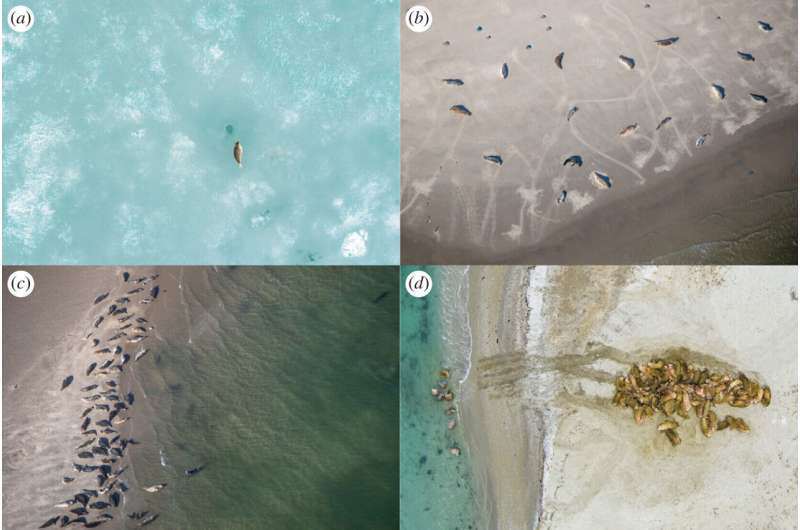August 9, 2023 report
This article has been reviewed according to Science X's editorial process and policies. Editors have highlighted the following attributes while ensuring the content's credibility:
fact-checked
peer-reviewed publication
trusted source
proofread
Harbor seals put more distance between one another than gray seals, perhaps to avoid disease

A team of marine scientists has found that harbor seals tend to put more space between themselves and their neighbors than gray seals do. In their study, reported in the journal Royal Society Open Science, the group studied seal behavior on the shores of the Dutch Wadden Sea and the behaviors that might constitute a response to spreadable diseases.
Over the course of the recent global pandemic, humans grew familiar with the idea of social distancing—keeping space between themselves and others to reduce the chances of spreading the disease. In this new effort, the research team wondered if oceanic species engage in a similar practice. To find out, they ventured to the shores of the Dutch Wadden Sea—a southeastern part of the North Sea—to study seal behavior.
The researchers noted that two main types of seals frequent the shores in that part of the world—harbor seals and gray seals. In aerial surveys of the area, the team noted that gray seals tend to congregate some distance from the shore, while harbor seals prefer to keep close to the water. They also found that harbor seals keep approximately twice as much distance between one another than gray seals do.
The researchers noted that harbor seals tend to fall victim to phocine distemper outbreaks—they have faced two major outbreaks over the past three decades, each of which led to major drops in their numbers. Gray seals, which are also susceptible to such infections, have not been nearly as heavily impacted because they generally survive such infections.
The research team suggests that the reason the harbor seals keep their distance is because they are practicing a form of social distancing as a way to reduce the chances of infection during outbreaks. Their findings could have implications for other marine animals that practice similar behavior in light of climate change—as the oceans grow warmer, there is likely to be an increase in spreadable diseases among oceanic species.
More information: J. P. A. Hoekendijk et al, Stay close, but not too close: aerial image analysis reveals patterns of social distancing in seal colonies, Royal Society Open Science (2023). DOI: 10.1098/rsos.230269
Journal information: Royal Society Open Science
© 2023 Science X Network


















